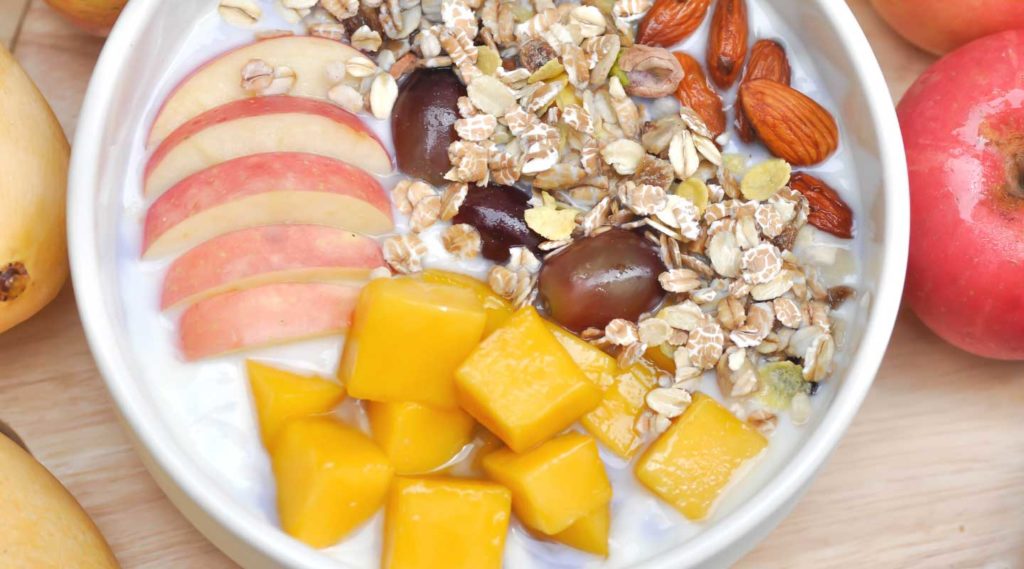
Stephanie Margolis, R.D.
Between 1980 and 2014 the United States saw more people suffer from diabetes and metabolic syndrome. As a result, the science community took a closer look at the foods we were eating – and the impact of sugar on our health quickly raised red flags. Scientists found that Americans were consuming 17 teaspoons of added sugars each day, that’s 270 calories per day or 1,890 calories in a week! What happened next was a war on sugars – all sugars. A causality of that war was fruit even though the sugars found in fruit were not to blame. Many headlines and fad diets jumped on the no-fruit bandwagon and, sadly, I have seen these nutritional gems get a bad wrap for many years since. However, here I am challenging you to think of fruit in a new way and search for ways we can ADD more fruit to our diets.
Sugar is everywhere in our diets. However, there is a significant difference between added sugars like corn syrup, galactose, high fructose corn syrup, and maltose, and the sugar that is naturally found in fruits like fructose and glucose. When these added sugars are created, they undergo processing and manufacturers often overuse them in the foods they are creating. It is true that fructose can be found in fruit and processed foods. however, fructose has only been shown to have negative health impacts when it is used in a processed food NOT when consumed in a whole fruit.
There is a general consensus among the scientific community that added sugars should be limited, The American Heart Association recommends limiting added sugars to 150 calories per day while the Institutes of Medicine recommends limiting to 25% of total calorie intake. Both organizations note that these limits DO NOT apply to fruit. In fact, to overdo it with the sugar found in fruit, in one day you would need to eat 18 bananas or 44 kiwi fruit. I have yet to meet a client that has eaten too much fruit. In fact, most are barely getting the 5 servings recommended for a healthy diet.
First, because the idea of ADDing food has a positive behavior association. When we talk about nutrition in the MIF community, we are coming from a place of abundance instead of restriction. We want to encourage you to ADD healthy foods to your diet instead of looking for all the things you must take away. Second, because fruit is filled with nutrients. Often referred to as the “original fast food” fruit provides many under-consumed nutrients. Fruit provides essential nutrients like Vitamin C, Vitamin A, folate, potassium, and fiber. These vitamins are also antioxidants which help protect our body and promote overall health. Here’s a quick look at why you need each:
Vitamin C is needed for proper growth and health of your skin, cartilage, and blood vessels. You can find Vitamin C in all citrus fruits.
Vitamin A is made in the body from beta-carotene. Vitamin A is needed for the health of our skin and tissues. You can find this in cantaloupe, apricots, watermelon, peaches, and plums.
Folate is best known for it’s ability to lower the risk of your child being born with neural tube defects, however, adequate folate is also thought to decrease the risk of heart disease, depression, and dementia. Enjoy some strawberries and oranges to meet your needs.
Potassium is vital in heart health and can help decrease your blood pressure. Eating bananas, prunes, peaches, apricots, cantaloupes, and honey dew melon can provide a boost of potassium
Fiber is the body’s broom. It helps keep our digestive tract healthy, removes waste, helps us feel fuller, and decreases our risk of high cholesterol and heart disease. All fruits have fiber in them, the crunchier the fruit, the better!
There are many ways to increase your fruit consumption, here are 4Ps to get started few ideas below:
